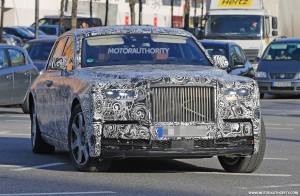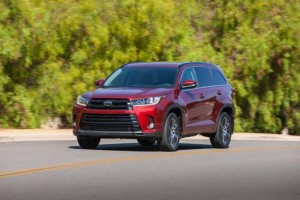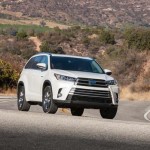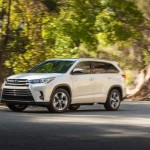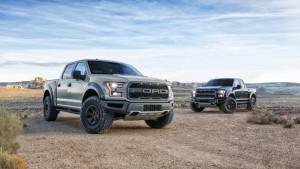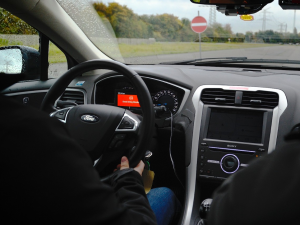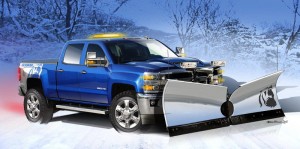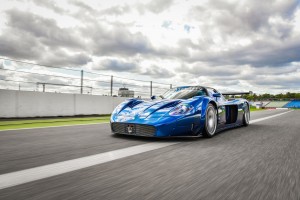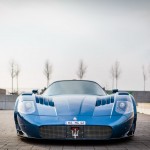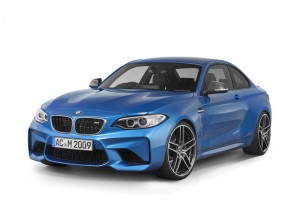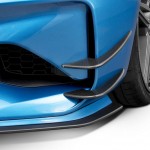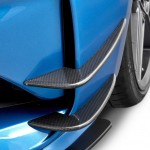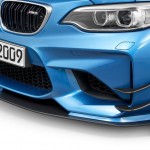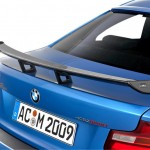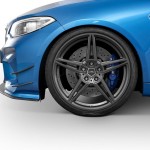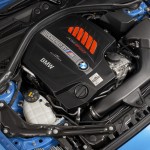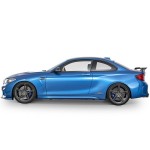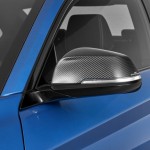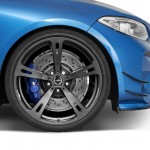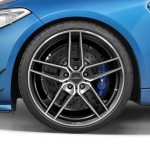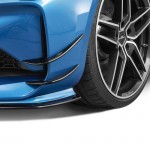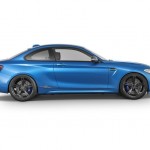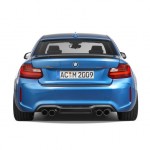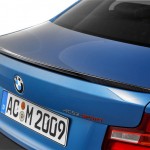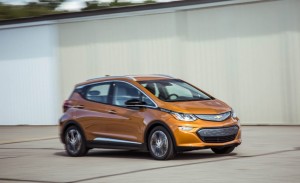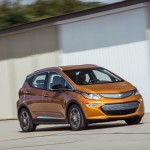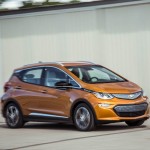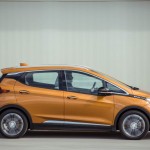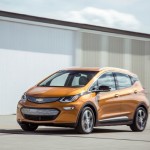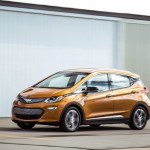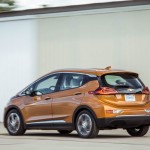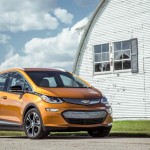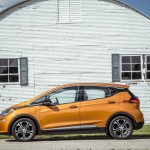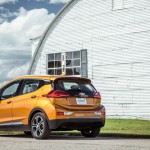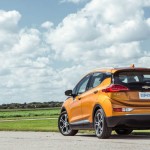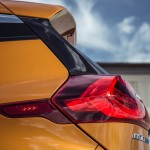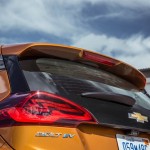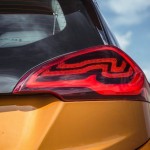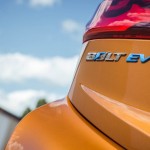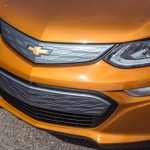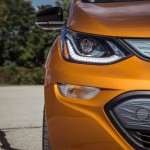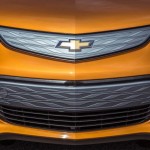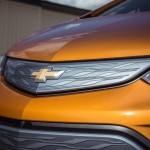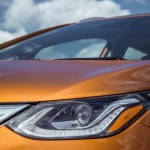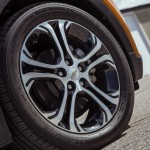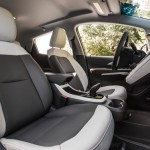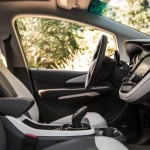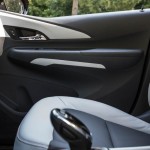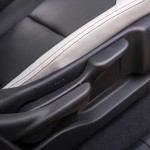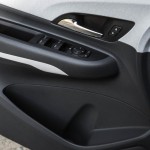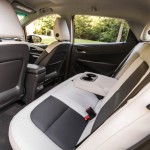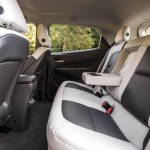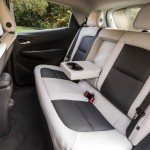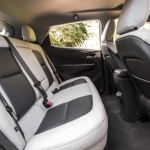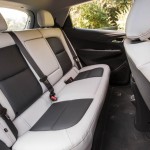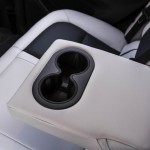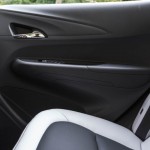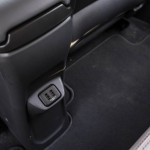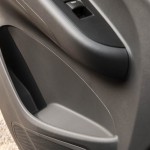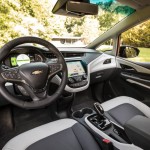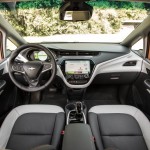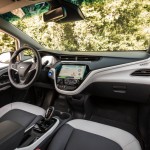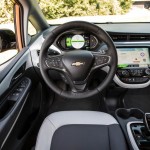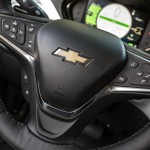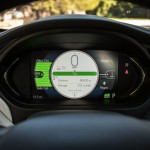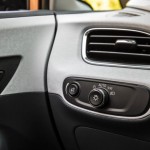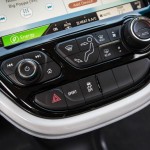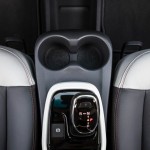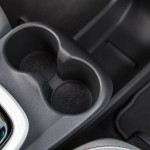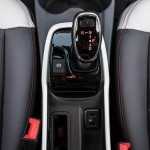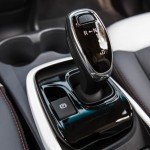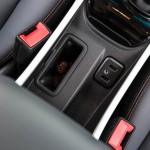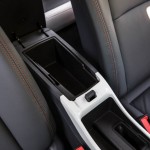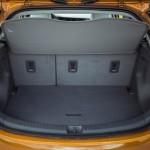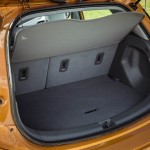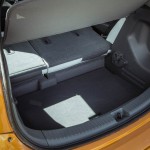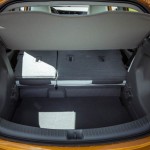Monthly Archives: November 2016
4 Things To Know About The 2018 Rolls-Royce Phantom
The 2018 Rolls-Royce Phantom has been spotted testing on public roads. This only confirmed that the seventh-generation Phantom, first launched in 2003, is finally on its way to the market.
Here are the things we learned about it based on a report:
1. It Will Have a New Aluminum Spaceframe Architecture
For the 2018 Phantom, Rolls developed an all-new aluminum spaceframe architecture that will be the basis for the entire lineup of the new Phantom.
The British auto company said that architecture is variable in size and ride height because it has to consider a list of other models, which will include coupes, sedans and yes, even an SUV.
The new frame will be lighter than the previous one, which was also an aluminum spaceframe. This means that the Phantom will have better dynamics compared to the outgoing model that weighs over 5,600 pounds.
The new architecture is expected to be considerably lighter than the previous one, also an aluminum spaceframe. Less weight should aid the new Phantom’s dynamics, given that the outgoing model weighs in at over 5,600 pounds.
2. Its Exterior is More Muscular
This new Phantom’s design will be evolutionary because the designers made it more muscular than the current car, and compared also to other models in the same segment. This muscular design is especially obvious at the rear, as well as on the modern touches such as LED headlights (rumored to be laser lights) and front bumper air curtains.
3. Its Interior is the Same as a BMW
Based on the spy shots, the interior elements of this new Phantom are test units similar to the BMW Group parts bin. The round air vents and leather-bound lower center console, however, are new items.
4. It Will Not Have a Hybrid Model
Because of it will have less weight, Rolls will be setting aside plans of an expected plug-in hybrid model, which would have to feature a large battery.
Top 3 Rumors About The New Toyota Supra
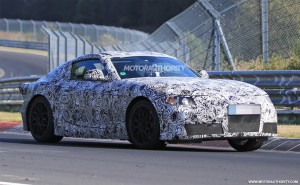
2019 Toyota Supra spy shot. (Photo Source: Motor Authority)
For the past several months, we have seen prototypes for Toyota’s new sports car being tested in the wild. The car is expected to revive the Toyota Supra name, so a lot is being expected from this.
1. The New Supra will get a V-6 Engine
Based on the spy video of the prototype, the engine sounds a lot like a V-6 engine, based only on the turbo whoosh-like sounds coming from the car. This would prove a report back in July that the car is getting a new twin-turbocharged V-6 engine that has been developed for Lexus and some high-end Toyotas.
There were earlier claims that the Supra will get a 4-cylinder, but that seems impossible given the leak on the possible V-6 engine, which can produce up to 400 horsepower on its own. Paired with the Supra and a hybrid system similar to the Hybrid-R concept, and the V-6 can churn more than 500 horses.
2. The New Supra’s Design Might be Based on BMW’s Z4
Details about the new Supra are scarce for now since Toyota has yet to release any word about how the Supra is going to be designed. Rumors, however, are saying that the Supra will have a similar rear-wheel-drive platform that was developed for the BMW Z4. It can also be recalled that such a design was previewed along with Toyota’s series of FT-1 concept cars back in 2014.
The BMW Z5, a replacement of the Z4, will be a traditional sports car with a soft-top roof. The Toyota is aimed to be a showpiece for the Japanese company’s performance-oriented hybrid technology that is developed for the World Endurance Championship.
3. The New Supra is Going to Markets Next Year
Toyota is not sure yet what they’ll call the sports car, though we’re gunning for the Supra label. Whatever name it ends up with, we can see by next year once it’s released if it can live up to the name and the hype. It will arrive just in time for the 2019 model year.
Six Variants To Break Down The 2017 Toyota Highlander Range
The new 2017 Toyota Highlander has more power, more safety features and more model choices. Unfortunately, these also add up to the pricing of this refreshed Highlander with extended trapezoidal grille and flashier LED taillights.
Here is the lowdown on the 2017 Highlander’s six trims:
LE
No expert would recommend the base LE trim because of its inefficient 185 horsepower for the 2.7-liter four-cylinder engine and six-speed automatic transmission it packs. All Highlander trim levels now come with a 3.5-liter V-6 engine with port and direct injection that can produce 295 horsepower and 1263 pound-feet of torque. All of these are paired with an eight-speed automatic transmission. Standard to it are forward-collision alert, adaptive cruise control, lane-keeping assist, automated emergency braking, and automated high-beams.
LE Plus
Priced at $36,000, it adds three-zone climate control, eight-way power driver’s seat, power liftgate, leather-wrapped steering wheel, softer fabric for seats, and 8-inch touchscreen with HD radio and SiriusXM.
XLE
For $39,190, you can have leather and heated front seats, push-button start, roof rails, sunroof, navigation with voice recognition and apps, second-row window shades, alarm, 4.2-inch color display, garage-door openers, and blind-spot monitoring with rear cross-traffic alert.
SE
New to the 2017 Edition, the SE trim level can be had for $40,630. It has stiffer springs and shocks, darkened roof rails, grille and headlights, 19-inch wheels, all-black interior with stripes on the seats and contrast stitching. Exclusive also to the SE trim level is the Salsa Red Pearl paint.
Limited
The Limited, which sells for $42,620, can project the Highlander logo on the pavement, thanks to the mirror-mounted puddle lamps. There’s also extra chrome on the bumper, an option for 8-passenger seating capacity, chrome 19-inch wheels, cooled front seats, driver and passenger seat memory, and four-way power passenger seat. You can also opt for the Platinum package for a total of $45,740. This adds a panoramic sunroof, 360-degree-view cameras, heated second-row seats, darkened chrome wheels, and rain-sensing wipers.
Hybrid
The Hybrid models for the Limited and Limited Platinum trims will be sold for $45,700 and $48,820, respectively. The all-wheel drive, gas-electric powertrain is available on the base LE and the XLE.
5 Essential Things To Know About The 2017 Ford F-150 Raptor
Now that Ford has officially opened ordering books for its 2017 F-150 Raptor, it’s safe to look at the truck again and see why customers are lining up for this. Team Ford in Las Vegas, for one, said it has roughly 300 customers on a waiting list.
1. Exterior
The exterior of the F-150 Raptor captures the same style as the 2015 edition, although the truck is now six inches wider to increase stability. The front and rear bumpers are raised while the new LED bulbs on the headlights are perfect for dark desert trail. It also has new 17-inch wheels wrapped in BFGoodrich’s iconic All-Terrain TA tire, the K02. On the side, you can find the familiar running boards, large fender flares and side graphics.
2. Interior
Since this now falls under the Raptor category, the interior received plenty of upgrades, too. It now has unique seats with leather and suede inserts, upgraded overhead console with switches and controls for the moonroof, F1-style paddle shifters, a suede- and leather-wrapped steering wheel, and carbon fiber accents around the cabin. As for the leg room, there’s massive space on the rear that makes it nearly limousine-like.
3. Drivetrain
Under the hood, you’ll find a second-generation 3.5-liter Ecoboost V-6 with a twin-turbo mill that can produce more power than the current 6.2-liter V-8 engine. The new engine cranks out 450 horsepower, though there’s still no word yet on torque rating. This Ecoboost engine is paired with a new 10-speed automatic transmission with F1-style paddle shifters.
4. Suspension
Ford also upgraded the Raptor’s suspension to keep up with the massive frame. The truck still has FOX Racing shock absorbers both at the front and rear, but these have been upgraded from 2.5-inch canisters to 3-inch units.
5. Prices
The Raptor has an MSRP of $49,520 but given the huge interest on it, expect dealers to shoot this up by $10,000.
4 Things You Should Know About the New Ford Driver-Assist Tech
The new Ford driver-assist technology portfolio has grown exponentially, thanks to its next-generation features that will help drivers park easier and avoid collisions.
The new technology will also warn drivers going the wrong way against traffic, as well as help drivers steer around slow or stopping vehicles in emergencies. Ford has since tripled its investment in driver-assistance technologies, which currently have parking, lane-keeping and speed management features.
Cross-Traffic Alert with Braking Technology
This will help drivers destress because the system will warn them if someone or something will be passing behind the vehicles. It will provide a warning to the driver, and then automatically braking the vehicle if the driver did not respond. To help with this tech is a rear wide-view camera with Enhanced active park assist that can park the car perpendicularly or vertically with a push of a button.
Evasive Steering Assist
This is one of the neat features of the new Ford Driver-Assist tech. The evasive steering assist is the first in the industry. It will help the drivers steer around slow or stopped vehicles to avoid collision. It is activated once there is insufficient space to avoid a collision by braking, and when the driver decides to take evasive action. The tech can be tested at city and highway speeds.
Wrong-Way Alert Technology
The technology means a camera will be mounted on the windshield because the information from that and the car’s navigation system will be used to issue audio and visual warnings should the driver begin driving in the wrong direction against traffic.
Enhanced Active Park Assist
Because parking is one of the most stressful parts of driving, Ford decided to further enhance its park assist. It now controls steering, gear selection and forward and reverse movement with just a push of a button. It can help the vehicle enter and exit a parallel and perpendicular parking space.
Reality Vs Concept: 2016 Chevrolet Silverado 2500HD Alaskan Edition
Although the SEMA Auto show was mostly for outlandish concepts, the 2016 Chevrolet Silverado 2500HD Alaskan Edition Concept was actually based on a production truck the company will be introducing next year. Owners of the Silverado 2500HD can opt for the Alaskan Edition—a snow plow prep package.
The production version of the Alaskan Edition is rumored to be packing the following: front hook-ups for a snow plow, 18-inch wheels, Goodyear DuraTrac tires, roof market lights, spray-on bedliner, skid plates, 220-amp alternator, and heavy-duty front springs. The concept version also has these things with the addition of other components that make it stand out from the rest.
According to reports, the concept version will be boasting of a blue body color with silver accents and grizzly bear graphic, chrome finishing on the bumpers, grille and mirror caps, huge stainless steel snowplow, front suspension leveling kit, and 20-inch wheels. Snowplows do not come with the box, but customers can choose which snowplow to purchase based on budget and usage.
Before building the Alaskan Edition Concept, Chevy already started plans to make it. These actual plans are very close to what was sitting in front of everyone at SEMA. The only major change is the huge snowplow, which can be angled to either side or can be V-shaped to plow the snow forward.
In terms of interior, the production version of the Alaskan Edition can only be applied on the Work Truck and LT trim levels while the concept is based on the LTZ trim level, which has rubberized floor covering and standard-issue LTZ leather seats with the grizzly bear logo embroidered on them.
There are no changes in the concept’s drivetrain from the production version. After all, the production version already packs GM’s newest 6.6-liter Duramax V-8 turbodiesel that can produce 445 horsepower and 910 pound-feet of torque.
3 Amazing Things About The Edo Competition’s Tuning Package For The Maserati MC12
The Maserati MC12 did not need more power or tuning, but Edo Competition apparently wanted to make our eyes pop out of their sockets. Almost a decade since it was first released, the MC12 is receiving an exciting new tuning package from the German auto tuner.
It seems outrageous that a car worth $1.6 million (and rising since it became a huge favorite among collectors) needs a performance package, but that’s what Edo Competition just did based on a report. Back when the MC12 was still brand new, a lot of auto tuners wanted to tinker with it, but Maserati was adamant the 50 units it released will stay that way. They were each priced at $670,000.
Things are different now because the Italian brand was the one who commissioned Edo Competition to come up with a package that will prepare the MC12 for the centenary celebration.
It Can Unleash 620 Horsepower
If put in competition with some of today’s fastest vehicles, the MC12 would still come up on top. It’s one of the fastest automobiles ever made and thanks to Enzo, the 6.0-liter V12 can originally produce 620 horsepower and 652 Nm (481 lb-ft) of torque. These figures allow the MC12 to go from 0 to 100 km/h in just 3.8 seconds. It has a maximum top speed of 330 km/h (205 mph).
Edo’s Variant Presents Slight Deviations
If you thought the MC12 was powerful enough on its own, then you’ll be surprised with what Edo did. The Edo variant is only one of the 12 track-only Corse cars that have been converted to road use. It features slight deviations from the original race car, such as the new exhaust system, street chassis, suspension tuning, and a fuel system that can process pump gas.
It’s Called the “Edo MC12 Versione Corse”
For short, it’s officially the VC, and can power a whopping 744 horsepower and 740 Nm (546 lb-ft) of torque. Because it only weighs 1,250 kilograms, it can go from 0 to 100 km/h in 3 seconds flat. It still has a top speed of 330 km/h.
Four Key Features Of AC Schnitzer 2016 BMW M2
AC Schnitzer specializes in aftermarket tuning of Bimmers, and what they did with the 2016 BMW M2 from front to back and top to bottom is the stuff fairy tales are made of. The tuning upgrade brought the M2 to the sports car echelon of the automobile industry.
Here are some new features you need to know about AC Schnitzer’s M2 tuning:
Aerodynamics
Tinkering with the aerodynamics is one of the staples of an AC tuning. The program for the M2 did not differ. The aerodynamics kit has carbon front side wings and carbon rear wing that enhance the M2’s looks. But aside from it, the carbon also works well together with the new front splitter, rear roof spoiler, and carbon rear diffuser. It allows well-tuned handling experience even when the car is running on high speed.
Interior
Interior has always been overlooked by every tuning company that upgraded a vehicle. That cannot be said with AC, though the changes are minimal like the aluminum pedal set and footrest, key holder, handbrake handle, aluminum cover for the M2’s iDrive Controller, and velour floor mats.
Drivetrain
The AC Schnitzer’s tuning of the M2 was focused on the engine modifications, though these are mostly software upgrades. Still, AC offers a charge cooler that can help improve the capacity and efficiency of M2’s 3.0-liter turbocharged six-cylinder engine. After the tuning, the M2 can now produce 420 horsepower, a 50 ponies upgrade from the standard 370 horsepower.
Suspension and brakes
AC Schnitzer specifically built RS coilovers for the M2. They are height-adjustable, and come with compression and rebound setting. It can also be lowered from 1.18 inches to 1.57 inches. There’s also the suspension spring kit that can drop the M2 from the height of 0.98 inches to 1.18 inches at the front and from 0.59 inches to 0.79 inches at the back.
Top 5 Reasons Why the 2017 Chevrolet Bolt EV Will Be a Hit
The arrival of the Chevrolet Bolt EV is a milestone for the automobile industry. This only means the electric vehicle variant isn’t going away, and it’s actually here to stay.
Here are the top 5 reasons why the the Chevrolet Bolt EV will succeed in the market, according to a source:
1. It’s Priced Below $30,000
The Bolt is really priced at $37,495 in LT trim, but a $7,500 federal tax credit can pull that price down to under $30,000. That’s not to mention that there are states and municipalities that offer incentives if you use an electric car.
2. It Can Run Up to 238 Miles
The Bolt can cover 238 miles of ground, but that’s a relaxed and leisurely drive up the California coast. The exponential effects of aerodynamic mean that the faster you go, the more energy you consume. When set to 75 mph with the climate at 72 degrees, the Bolt’s battery can last up to 190 miles. That’s more than you need for daily driving. The Bolt also has three controls on its digital instrument panel: minimum, maximum, and a more prominent best estimated based on your driving style, use of accessories like headlights and audio and ambient conditions.
3. Fast Charging is Becoming Available
If you’re worried about the charging time, don’t be. For $750, Bolt owners can have the direct-current fast-charging capability via a Combined Charging System (CCS) port. As of September, there are already 1,061 CCS connectors in the US. These stations charge at 50 kilowatts, which, according to Chevrolet, means an added 90 miles of range in 30-minute charging. But that’s nothing compared to Tesla’s 2,010 Supercharger hookups with 120 kilowatts capacity.
4. It Offers Comfortable Driving Experience
The Bolt delivers comfort to both the driver and the passengers even over broken pavements, thanks to the low-mounted battery that is cushioned by well-tuned damping. In terms of chassis tuning, it is similar to the Cadillac CT6 and the Chevrolet Malibu.
5. It’s Less Than a Crossover, But More Than a Sedan
The Bolt is originally marketed as a crossover, though it looks nothing like it. The only thing similar with a crossover is the tall seating position because of the underfloor battery pack. It doesn’t have the ground clearance, though, of a crossover.
3 Things You Should Know About The 2018 Jaguar XF Sportbrake
Spy shots of the 2018 Jaguar XF Sportbrake, which will be introduced at the 2017 Frankfurt Motor Show, have recently been released, and it confirmed some rumors we have heard in the past. For one, though details are scarce because the prototype was heavily camouflaged, it has an untouched front design as compared to the changes made on the sedan and the rear end is now significantly longer.
Jaguar was Hesitant
Jaguar was, at first, hesitant to introduce a wagon variant of their business saloon because competition is tough in the segment, especially with German competitors such as the E-Class Estate, the Audi A6 Avant and the 5 Series Touring. These are all well-established models, especially in their hometown of Germany. But another thing that made Jaguar hesitant was that the market seems to be declining with regards to this particular segment.
But, of course, Jaguar did not simply give up. They already have experience with a competent family wagon that has an appealing and interesting design, and the Jaguar XF Sportbrake is no different. There is no word yet on how the 2018 model will be patterned, though the proportions hidden by the camouflage in the spy shots clearly hint similarity with its predecessor. With the chiseled design of the 2016 XF in mind, there is already a clearer picture of how this new XF Sportbrake will look like.
Changes are Internal
Not much are changing in terms of the overall exterior look of the XF Sportbrake. Instead, adjustments and modifications are all happening under the hood (and maybe even in the interior setup). The XF Sportbrake will be based on the XF sedan, which explains the identical front.
Rumored V8 Might Be True
The XF Sportbrake will be made of aluminum material, making it lighter in weight. It will come with the Ingenium four- and six-cylinder diesel and gasoline engines, as well as a rumored plug-in hybrid drivetrain. Also in the pipeline is a possible 5.0-liter V8 with a production of either 550 horsepower or 575 horsepower, just like what Jaguar did with the F-Type SVR.

